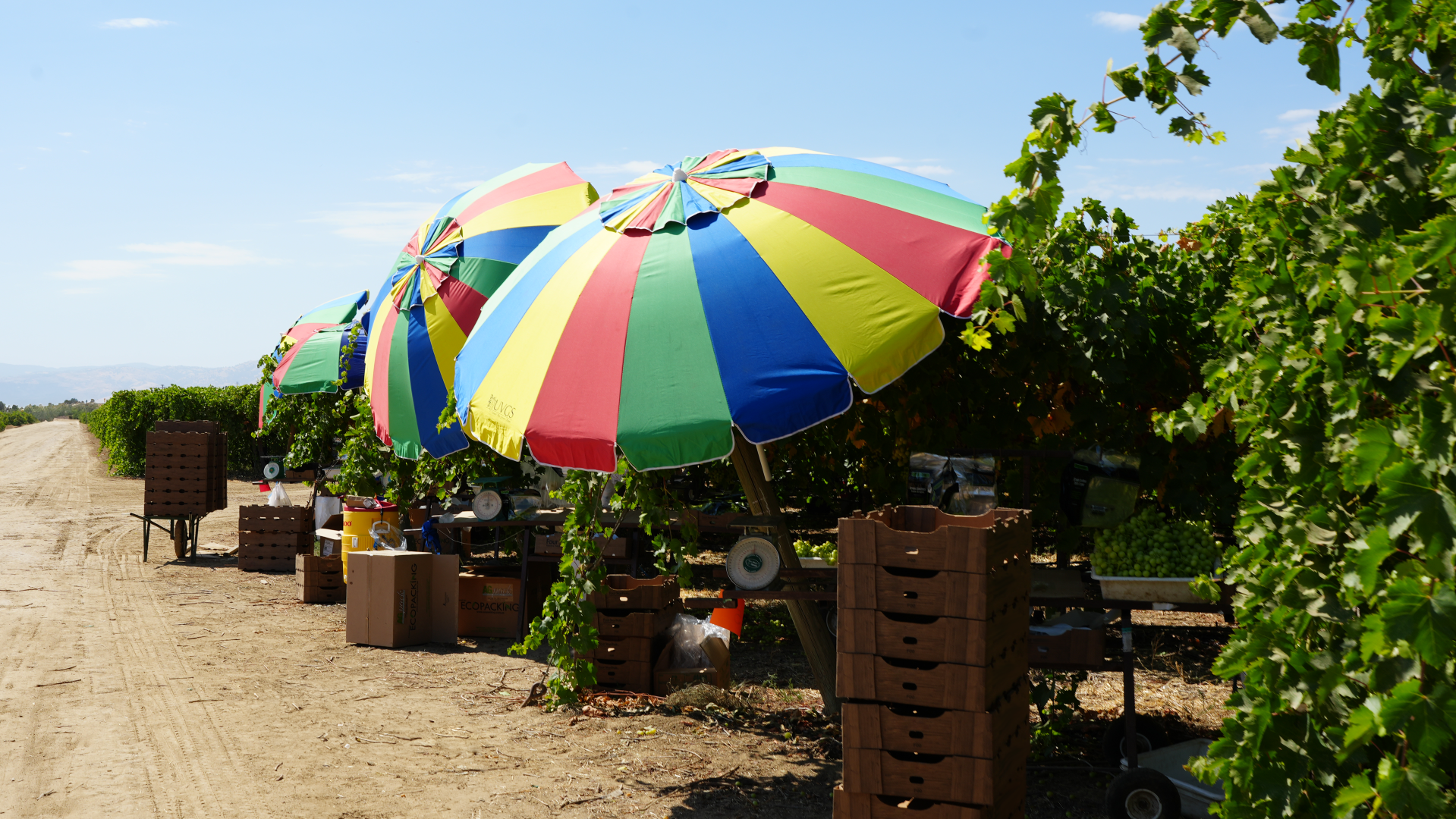Heat Illness Prevention
Heat Illness Laws
Outdoor workplaces, such as agricultural sites, must adhere to CAL/OSHA’s Heat Illness Prevention regulations for outdoor employment. The phrase “Water. Shade. Rest.” is a helpful reminder for employers to take the necessary steps to protect workers from heat-related illnesses.
Preventative Measures
According to CAL/OSHA and the California Code of Regulations (Title 8, Section 3395), California employers must implement the following measures to prevent heat illness:
Training
Supervisors and employees should receive training on heat illness prevention. They need to understand the environmental and individual risk factors, as well as the additional strain that heat exertion, clothing, and personal protective equipment place on the body.Water
Ensure an adequate supply of clean, cool water is available for every worker, encouraging them to drink at least one quart (four 8-ounce glasses) every hour. Water should be fresh, pure, and provided free of charge. It should be placed as close to the work areas as reasonably possible.Shade
Make shade accessible and encourage staff to spend at least five minutes cooling off in the shade, even if they are not feeling ill. Shaded areas must be nearby and provided when the temperature exceeds 80°F and should be in open air or have ventilation or cooling. Employees should be permitted and encouraged to take preventative cool-down breaks in the shade as needed.Planning
Develop documented protocols to ensure adherence to the Cal/OSHA Heat Illness Prevention Standard. An effective heat illness prevention plan must be implemented, written, and available at the workplace in both English and the language most employees understand.
Heat Illness Prevention in the Vineyard
According to Ogletree Deakins, CAL/OSHA conducted an inspection of a vineyard in 2018 after receiving a worker complaint about inadequate access to drinking water. The inspection revealed that barriers such as trellises, wires, and irrigation systems can hinder access to drinking water in grape vineyards. Employers must ensure that water is easily accessible despite these obstacles.
Symptoms
Supervisors and employees should be aware of heat stroke and heat exhaustion symptoms, which include headaches, nausea, excessive sweating, and elevated body temperature. Knowing first aid for heat illness is crucial and can be immensely helpful while waiting for medical care.
Supplies
Various tools can be used in the fields to help prevent heat illness. Water jugs, such as Igloo Coolers, paired with disposable paper cups (cone-shaped or flat), are commonly used to supply water. Shade trailers, canopies, and umbrellas can provide shaded areas, and seating is encouraged to allow for optimal rest during high temperatures.
Preventing heat illness is crucial in outdoor workplaces. At Jim’s Supply, you can find heat illness prevention supplies to help ensure your workplace adheres to CAL/OSHA’s regulations. Protecting workers from heat-related illnesses is not just a legal requirement but a moral imperative to ensure the safety and well-being of all employees.
Credit/Sources:
https://www.dir.ca.gov/title8/3395.html
https://www.jdsupra.com/legalnews/california-pushes-employers-to-make-5253954/









